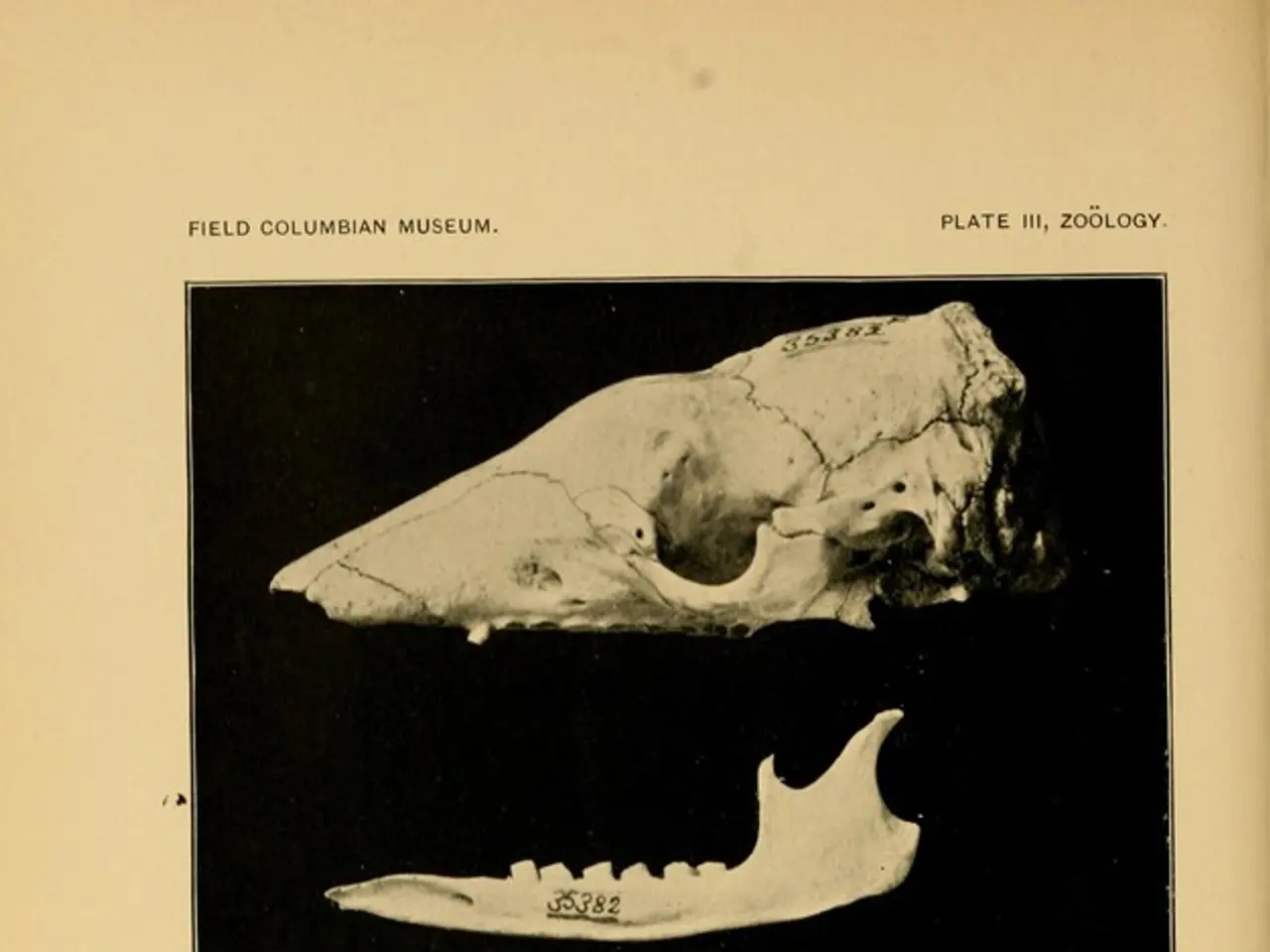Are there remedies for osteoporosis? Exploring top treatment methodologies
In the perimenopausal and menopausal stages, a doctor may suggest medications that affect estrogen levels for females to help manage osteoporosis, a condition characterised by weakened bones and a higher risk of fractures [1].
One such treatment is estrogen replacement therapy, which can be administered through pills, skin patches, or creams. This therapy helps reduce the risk of osteoporosis in females during menopause by maintaining bone density [2]. However, it's important to note that estrogen agonists/antagonists, a different class of medications, may be more effective in some cases. These drugs have similar effects on some tissues while blocking estrogen in others, thereby improving bone density [2].
Osteoanabolic drugs, such as teriparatide, abaloparatide, and romosozumab, are a newer class of medications that stimulate bone formation by activating osteoblasts, leading to increased bone mineral density (BMD) and improvement of bone microarchitecture [1]. These treatments have been shown to partially reverse the deterioration in bone quality and strength, reducing fracture risk. However, they require sequential use with antiresorptive drugs (e.g., bisphosphonates or denosumab) to maintain and further enhance gains in BMD long term [1].
Emerging regenerative approaches like stem cell therapy show potential for more profound restoration by generating new osteoblasts and improving bone tissue quality through bioactive factors. Stem cells’ immunomodulatory effects also help reduce inflammation-related bone loss, potentially enhancing bone repair and density recovery [2].
Lifestyle factors also play a critical role in bone regrowth and overall osteoporosis management. High-intensity resistance and impact training exercises, such as the LIFTMOR protocol, have demonstrated measurable improvements in bone density and are important for stimulating bone formation and strength [4]. Adequate calcium and vitamin D intake support bone remodeling but alone are insufficient for reversing osteoporosis [5].
Key factors influencing the possibility and extent of bone regrowth in osteoporosis include the type of treatment, patient age, severity of bone loss, underlying health status, lifestyle factors, nutritional status, and control of contributing factors like inflammation, hormonal deficiencies, or medications [3].
While complete "full" reversal of osteoporosis bone loss is currently unrealistic, modern osteoanabolic treatments combined with antiresorptives, supportive lifestyle interventions, and emerging regenerative therapies can lead to substantial bone regrowth and improved bone quality, markedly reducing fracture risk [1][2][4].
References:
[1] National Osteoporosis Foundation. (2021). Osteoporosis Treatment. Retrieved from https://www.nof.org/patients/treatment/
[2] National Institutes of Health. (2020). Osteoporosis: Hope Through Research. Retrieved from https://www.bones.nih.gov/health-info/bone/bone-health/osteoporosis/osteoporosis-hope-through-research
[3] American Academy of Orthopaedic Surgeons. (2021). Osteoporosis. Retrieved from https://orthoinfo.aaos.org/en/diseases--conditions/osteoporosis
[4] National Institute on Aging. (2020). Bone Health: Preventing Osteoporosis. Retrieved from https://www.nia.nih.gov/health/bone-health-preventing-osteoporosis
- In addition to medications, high-intensity resistance and impact training exercises, like the LIFTMOR protocol, can stimulate bone formation and strength.
- Adequate calcium and vitamin D intake are essential for bone remodeling but may not be sufficient for reversing osteoporosis.
- Stem cell therapy could potentially generate new osteoblasts, improve bone tissue quality, and reduce inflammation-related bone loss.
- The type of treatment, patient age, severity of bone loss, underlying health conditions, lifestyle factors, nutritional status, and control of contributing factors all influence bone regrowth in osteoporosis.
- While a "full" reversal of osteoporosis bone loss is currently unrealistic, modern osteoanabolic treatments combined with antiresorptives can lead to significant bone regrowth and improved bone quality.
- Emerging regenerative therapies have the potential to further enhance bone regrowth and reduce fracture risk in osteoporosis patients.
- Osteoanabolic drugs, such as teriparatide, abaloparatide, and romosozumab, stimulate bone formation and improve bone microarchitecture, reducing fracture risk.
- Estrogen agonists/antagonists may be more effective in managing osteoporosis in some cases, as they have similar effects on some tissues while blocking estrogen in others.
- Estrogen replacement therapy can help reduce the risk of osteoporosis in women during menopause by maintaining bone density.
- Lifelong maintenance of bone health is crucial for preventing chronic diseases such as osteoporosis, especially in women and aging individuals.
- Nutrition plays a crucial role in overall health, including cardiovascular health, weight management, and skin care, in addition to bone health.
- Medical conditions such as menopausal-related osteoporosis, respiratory conditions, cancer, and mental health issues can impact a person's health and wellness in various ways.
- Workplace wellness programs can provide employees with resources and education on managing medical conditions, including osteoporosis and other chronic diseases, as well as promoting fitness, exercise, and mental health.




